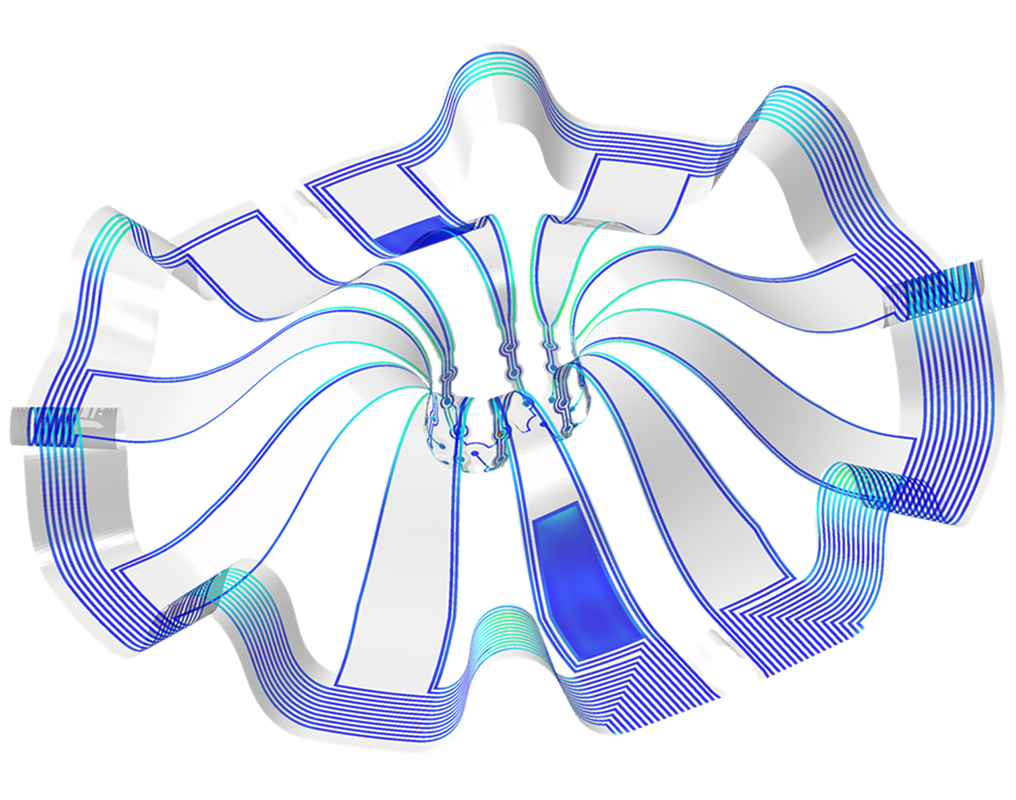Developing new tools to study traumatic brain injuries with $2.7 million grant

When John Finan was an undergraduate student, his friend suffered a traumatic brain injury during a motorcycle accident. The experience had a profound impact on Finan and motivated him to research traumatic brain injuries from a mechanical engineering perspective.
“I started out trying to design a better motorcycle helmet,” said Finan, an assistant professor in mechanical and industrial engineering at UIC. “Over the years, I became fascinated and more excited about the opportunity of using the combination of biology and engineering to make progress on the treatment side of this problem as opposed to prevention.”
Now, Finan is taking his research to new levels with a new grant to study traumatic brain injury using experiments and modeling based in stem cell research.
Stem cell research has grown exponentially as scientists discovered stem cells can be made from regular cells such as skin cells, blood cells, or cells from urine, and turned into very hard to get cells like heart or brain cells. In addition, scientists started turning the cells into organoids, which are three-dimensional cell cultures that incorporate some of the key features of the represented organ and are capable of recapitulating some of its functions.
“It changed science, because suddenly we can work with human brain cells that we could never get before. When you make cells in this way, they still have the genes of the person you made them from,” Finan said. “If you take cells from a person that has a gene that’s going to give them Lou Gehrig’s disease, the cells you make will have it, too. It gives us a very powerful new way to look at diseases in humans and in human tissue that’s particular to different people.”
While this area of stem cell research has surged, there are still major obstacles that need to be addressed. The stem cells are very small and it’s hard to put an electrode on them. They don’t have arms or legs, and can’t be taught to do tasks. They are not flat, and it is difficult to work with them on a microscope.
“We have a brand-new frontier in neuroscience but no tool box,” Finan said.
To address this issue, Finan and his partners are developing new tools that allow researchers to study the organoids in a comprehensive manner. One of the most important and exciting contributions is a small basket with electrodes that can hold little balls of brain cells. The basket is similar to an EEG hat, which is a special cap with electrodes that detects the electrical activity of the brain.
“We’re recreating that on a sub-millimeter scale,” he said. “We can drop the “brain” into it, and it will cradle it. Instead of just having one electrode in contact, we’ve got dozens of electrodes touching it and we can listen to its activity.”
The new tool also allows researchers to manipulate the organoids. A heating element allows the researchers to “cook” one side of the organoid to see how it reacts to a local stress, and a light activates brain cells. Finan also has developed methods to precisely and rapidly squash and deform organoids to stimulate what happens inside the head during an impact. This electrode basket can be used to measure loss of function in these injured organoids.
“I’m excited,” Finan said. “Most of the people who are using these brain organoids are using them to answer questions about development of the brain, but I’m really interested to use them to study traumatic injuries to the brain and the consequences.”
Finan’s grant is titled “Novel Tools for In Vitro Electrophysiology and Neurotrauma Modeling” with more than $2.7 million in funding from the National Institutes of Health: National Institute of Neurological Disorders and Stroke. John Rogers, an expert in flexible electronics, Yonggang Huang, an expert on finite element modeling, both of Northwestern University, and Colin Franz, a physician and electrophysiologist at the Shirley Ryan AbilityLab, are key collaborators on the five-year award.
Learn more about Finan’s research at Finan Lab.